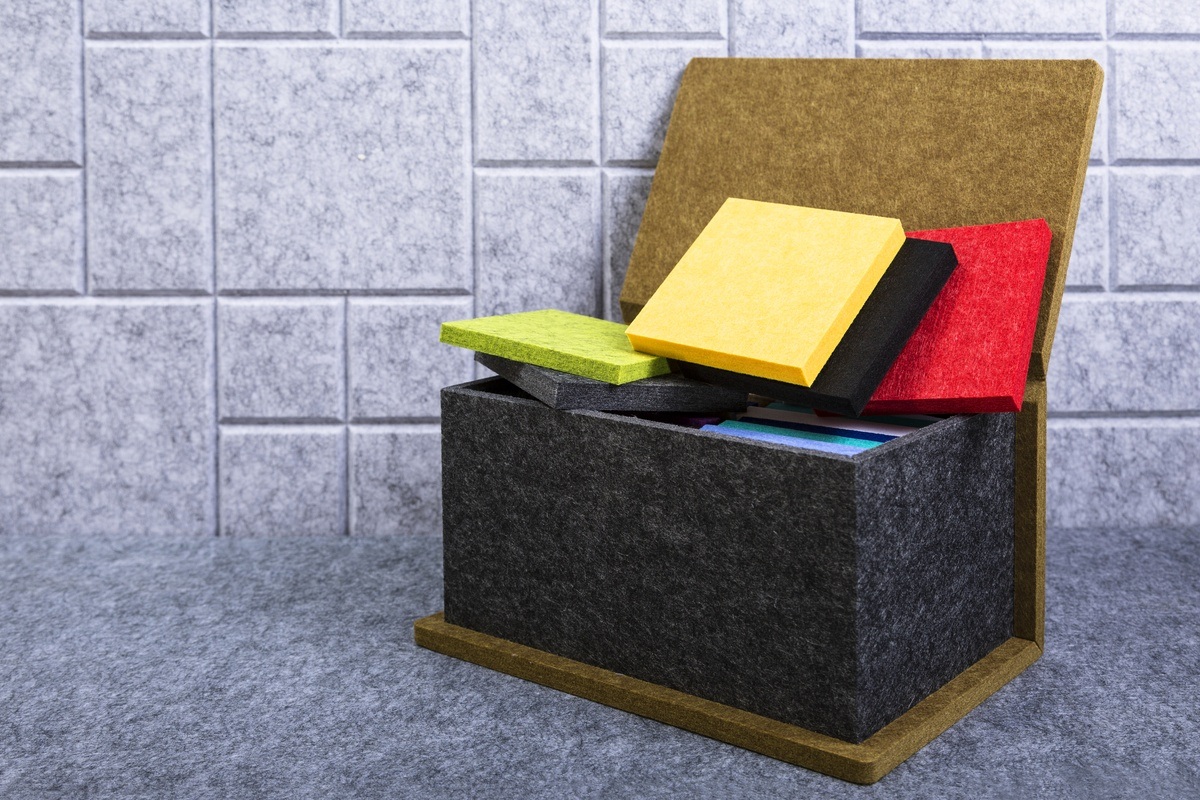How do you soundproof walls with sound absorbers?
Creating a pleasant sound environment in a room is about reducing reverberation and sound reflections, which makes the sound more balanced and pleasant. By installing sound absorbers in strategic locations, you can effectively dampen unwanted noise, improve speech intelligibility, and create more harmonious acoustics. This is especially important in environments where sound comfort is crucial, such as offices, restaurants, conference rooms, home theater systems, and recording studios.
Sound absorbers work by capturing and absorbing sound waves before they are reflected further into the room. They are available in various materials and designs, such as acoustic panels, foam absorbers, and textile-based solutions. The choice of absorbers depends on the size of the room, its use, and the type of sound that needs to be dampened. To achieve the best results, a combination of several sound-absorbing solutions is often required.
By installing sound absorbers in the right places, you can not only reduce disturbing noise but also improve the sound quality in the room. This is particularly important in environments where clear communication is crucial, such as meeting rooms, training rooms, and restaurants, where high noise levels can otherwise have a negative impact on the working environment and well-being.
Benefits of using sound absorbers in a room
Sound absorbers play a key role in reducing reverberation and dampening noise, creating a more controlled sound environment. One of the main benefits is reduced noise levels, making the room quieter and more pleasant to be in. This is especially important in open-plan offices and other environments where background noise can be disruptive.
By reducing noise levels, sound absorbers create a better working environment. High noise levels can increase stress and reduce concentration, which has a negative impact on productivity. By installing sound absorbers, you can create a more focused and relaxed working environment, where sound is more controlled and pleasant.
Sound absorbers also improve sound quality by reducing unwanted echoes and distortions. This is crucial in environments where sound reproduction is important, such as recording studios, home theater systems, and conference rooms. When sound reflections are reduced, speech and music become clearer and more natural, creating a better sound experience for everyone in the room.
Another important benefit is increased privacy. By reducing sound transmission between rooms, sound absorbers can contribute to a more private and confidential working environment, which is particularly relevant in open-plan offices and healthcare environments where privacy is important.
Strategic placement of sound absorbers for maximum effect
For sound absorbers to provide the best possible results, it is crucial to place them strategically. Walls are one of the most effective places to install absorbers, especially in rooms with hard surfaces where sound easily bounces and creates echoes.
One of the most effective ways to soundproof a room is to place absorbers in an "L" pattern, covering one long and one short wall. This reduces the risk of sound waves bouncing directly between opposite walls, which can create unbalanced acoustics.
Ceiling absorption is also an important part of a complete soundproofing solution. The ceiling is often an overlooked surface, but sound is reflected upward and can create long reverberation if not absorbed effectively. By installing ceiling absorbers, you can further improve the acoustics and reduce noise in the room.
The floor can also contribute to a better sound environment, especially if it is covered with carpets or other sound-absorbing materials. A combination of wall absorbers, ceiling absorbers, and soft floor materials provides a more balanced sound environment and reduces disturbing noise.
Cover enough surface area to achieve optimal effect
For sound absorption to make a noticeable difference, at least 20-30% of the room's wall surface should be covered with sound absorbers. The larger the surface area that absorbs sound, the better the overall sound environment will be.
In office environments where conversations and background noise are a big part of the working day, it is important to place absorbers close to workstations and conversation zones. A good location is to install absorbers on the wall behind and in front of the desk. In meeting rooms, absorbers can be mounted on the walls to reduce sound reflections and improve speech perception.
In larger spaces, such as restaurants and conference rooms, it may be necessary to combine several types of sound absorbers, such as wall panels, ceiling tiles, and freestanding sound-absorbing screens.
Effective sound absorption for a better sound environment
Using sound absorbers is one of the most effective ways to create a more pleasant and functional sound environment. By reducing reverberation and sound reflections, you can improve the working environment, increase concentration, and create a calmer atmosphere.
If you still experience high noise levels despite installing sound absorbers on the walls, it may be necessary to supplement with additional measures. Covering more surfaces, such as the ceiling, or using furniture and carpets with sound-absorbing properties can help achieve a more controlled sound environment.
Whether it's an office, restaurant, home, or recording studio, the right choice and placement of sound absorbers can make a significant difference. With a well-thought-out strategy, you can create an optimal sound environment for both work and everyday life.







